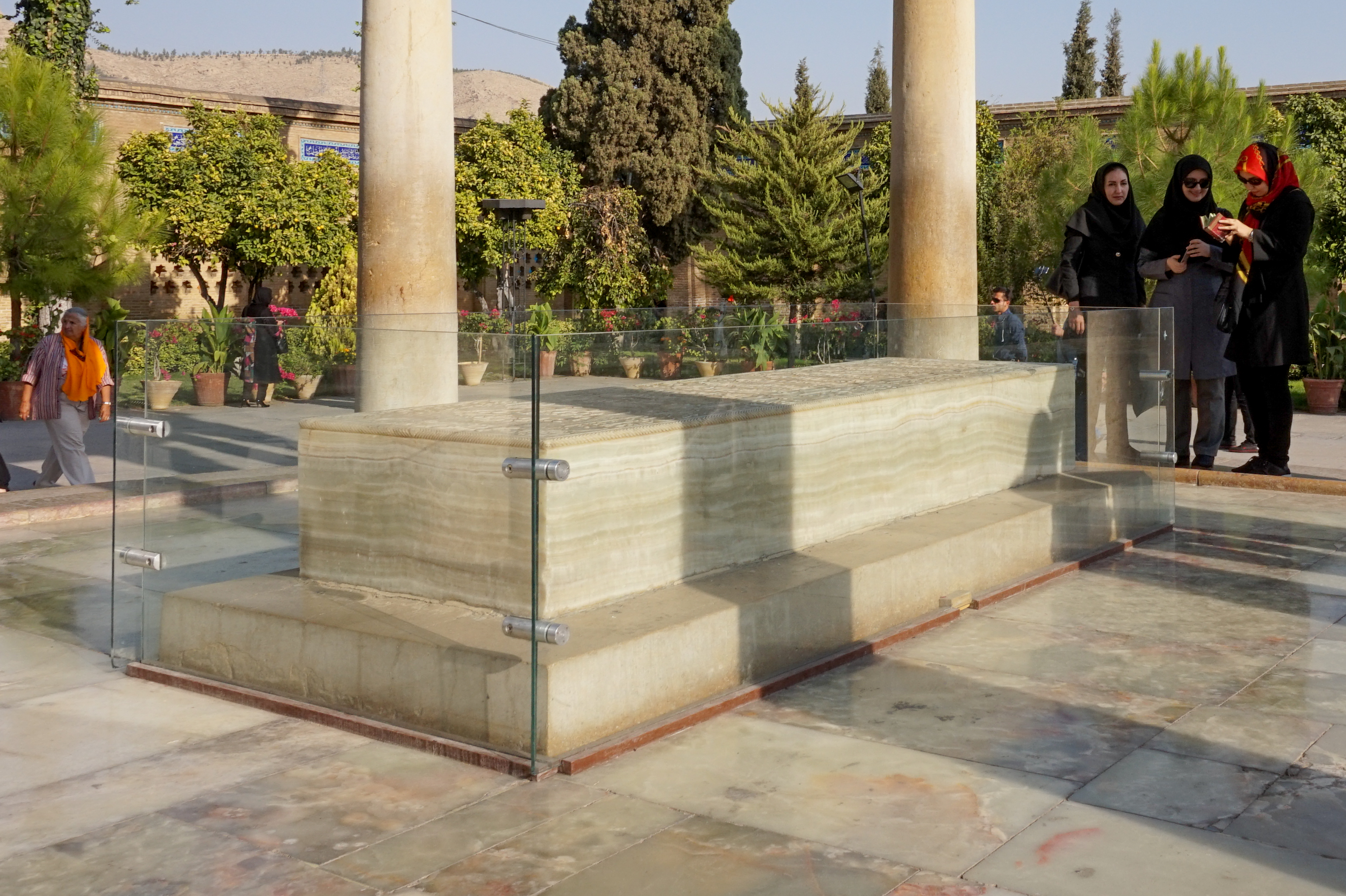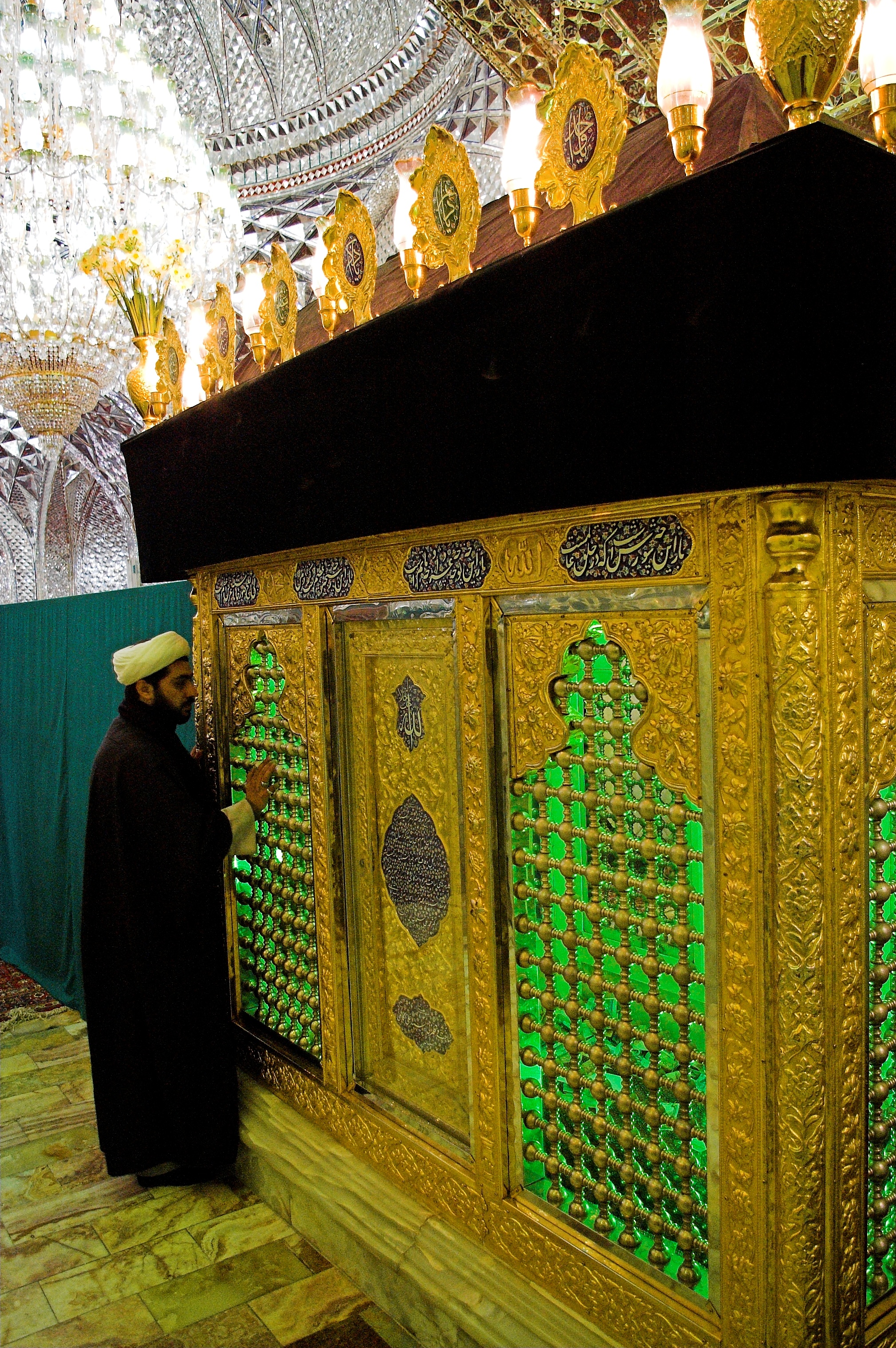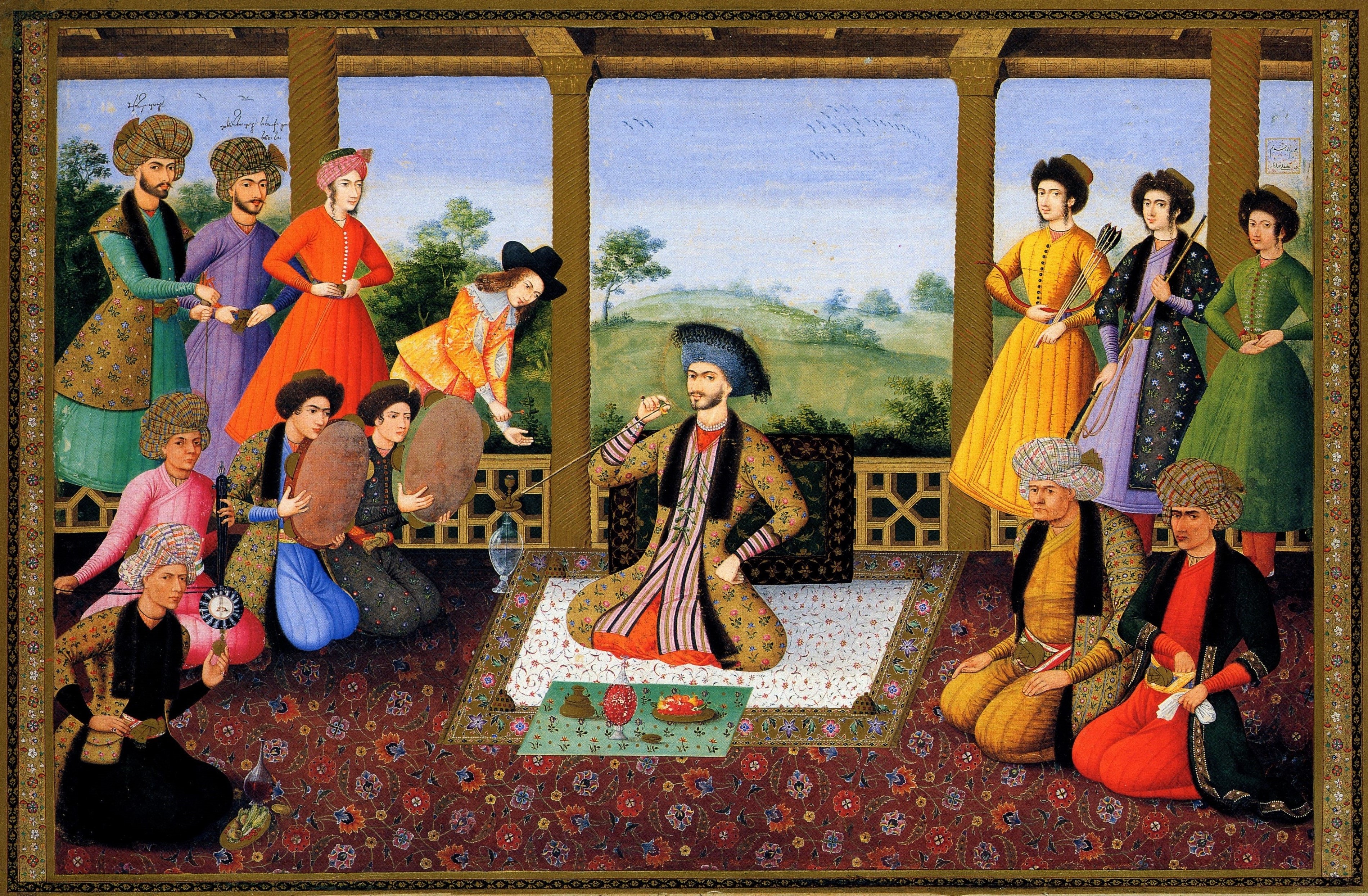|
Nima Youshij
Nimā Yushij ( fa, نیما یوشیج) (11 November 1895 – 4 January 1960), also called Nimā (), born Ali Esfandiāri (), was an Iranian poet. He is famous for his style of poetry which he popularized, called ''she'r-e now'' (, lit. "new poetry"), also known as '' She'r-e Nimaa'i'' (, lit "Nima poetry") in his honour after his death. He is considered as the father of modern Persian poetry. He died of pneumonia in Shemiran, in the northern part of Tehran and was buried in his native village of Yush, Nur County, Mazandaran, as he had willed. Early life He was the eldest son of Ibrahim Nuri of Yush (a village in Baladeh, Nur County, Mazandaran province of Iran). He was a Tabarian, but also had Georgian roots on his maternal side. He grew up in Yush, mostly helping his father with the farm and taking care of the cattle. As a boy, he visited many local summer and winter camps and mingled with shepherds and itinerant workers. Images of life around the campfire, especiall ... [...More Info...] [...Related Items...] OR: [Wikipedia] [Google] [Baidu] |
Shemiran
Shemirān ( fa, شمیران, , also Romanized as Shemīrān or Šemirân), also known as Shemirānāt ( fa, شمیرانات ) is the capital of Shemiranat County, Tehran Province, Iran, but is actually located just north of the borders of Tehran County along Chamran Expressway and Sadr Expressway and it is the northernmost district of the city of Tehran. Shemiran lies in the slopes of Alborz Mountain and enjoys a suitable mild climate. It has fine and well-kept parks and is home to the richest class of Iranian society. Most of the foreign embassies and the Tehran International Fair are situated in Shemiran. It is also where Imam Zadeh Saleh is, and where the former home of Ruhollah Khomeini was located. Among the neighborhoods of Shemiran are: Darakeh, Darband, Jamaran, and Niavaran on the far north, as well as Zafaraniyeh, Elahiyeh, Velenjak, Gheytarieh, Farmanieh and Kamranieh. Name The word ''Shemiran'' or ''Shemran'' derives from the Assyrian language word ''Ch ... [...More Info...] [...Related Items...] OR: [Wikipedia] [Google] [Baidu] |
Persian Poetry
Persian literature ( fa, ادبیات فارسی, Adabiyâte fârsi, ) comprises oral compositions and written texts in the Persian language and is one of the world's oldest literatures. It spans over two-and-a-half millennia. Its sources have been within Greater Iran including present-day Iran, Iraq, Afghanistan, the Caucasus, and Turkey, regions of Central Asia (such as Tajikistan) and South Asia where the Persian language has historically been either the native or official language. For example, Rumi, one of the best-loved Persian poets, born in Balkh (in modern-day Afghanistan) or Wakhsh (in modern-day Tajikistan), wrote in Persian and lived in Konya (in modern-day Turkey), at that time the capital of the Seljuks in Anatolia. The Ghaznavids conquered large territories in Central and South Asia and adopted Persian as their court language. There is thus Persian literature from Iran, Mesopotamia, Azerbaijan, the wider Caucasus, Turkey, Pakistan, Bangladesh, India, Tajikista ... [...More Info...] [...Related Items...] OR: [Wikipedia] [Google] [Baidu] |
Hafez
Khwāje Shams-od-Dīn Moḥammad Ḥāfeẓ-e Shīrāzī ( fa, خواجه شمسالدین محمّد حافظ شیرازی), known by his pen name Hafez (, ''Ḥāfeẓ'', 'the memorizer; the (safe) keeper'; 1325–1390) and as "Hafiz", was a Persian lyric poet, whose collected works are regarded by many Iranians as a pinnacle of Persian literature. His works are often found in the homes of people in the Persian-speaking world, who learn his poems by heart and use them as everyday proverbs and sayings. His life and poems have become the subjects of much analysis, commentary and interpretation, influencing post-14th century Persian writing more than any other Persian author. Hafez is best known for his Divan of Hafez, a collection of his surviving poems probably compiled after his death. His works can be described as "antinomian" and with the medieval use of the term "theosophical"; the term "theosophy" in the 13th and 14th centuries was used to indicate mystical work by ... [...More Info...] [...Related Items...] OR: [Wikipedia] [Google] [Baidu] |
Saadi (poet)
Saadi Shīrāzī ( fa, ابومحمّد مصلحالدین بن عبدالله شیرازی), better known by his pen name Saadi (; fa, سعدی, , ), also known as Sadi of Shiraz (, ''Saʿdī Shīrāzī''; born 1210; died 1291 or 1292), was a Persian poet and prose writer of the medieval period. He is recognized for the quality of his writings and for the depth of his social and moral thoughts. Saadi is widely recognized as one of the greatest poets of the classical literary tradition, earning him the nickname "The Master of Speech" or "The Wordsmith" ( ''ostâd-e soxan'') or simply "Master" ( ''ostâd'') among Persian scholars. He has been quoted in the Western traditions as well. '' Bustan'' has been ranked as one of the 100 greatest books of all time by ''The Guardian''. Biography Saadi was born in Shiraz, Iran, according to some, shortly after 1200, according to others sometime between 1213 and 1219. In the Golestan, composed in 1258, he says in lines evidently addr ... [...More Info...] [...Related Items...] OR: [Wikipedia] [Google] [Baidu] |
Nezam Vafa
Khvajeh Nezam-e Chahar Dang ( fa, خواجه نظام چهاردانگ, also Romanized as Khvājeh Nez̧ām-e Chahār Dāng; also known as Khakenesun, Khāk Nezām, Khvājeh Nez̧ām, and Nez̧ām Vafā) is a village in Howmeh Rural District, in the Central District of Bam County, Kerman Province, Iran. At the 2006 census, its population was 203, in 49 families. References Populated places in Bam County {{BamIran-geo-stub ... [...More Info...] [...Related Items...] OR: [Wikipedia] [Google] [Baidu] |
Roman Catholic
Roman or Romans most often refers to: *Rome, the capital city of Italy *Ancient Rome, Roman civilization from 8th century BC to 5th century AD *Roman people, the people of ancient Rome *'' Epistle to the Romans'', shortened to ''Romans'', a letter in the New Testament of the Christian Bible Roman or Romans may also refer to: Arts and entertainment Music * Romans (band), a Japanese pop group * ''Roman'' (album), by Sound Horizon, 2006 * ''Roman'' (EP), by Teen Top, 2011 *" Roman (My Dear Boy)", a 2004 single by Morning Musume Film and television * Film Roman, an American animation studio * ''Roman'' (film), a 2006 American suspense-horror film * ''Romans'' (2013 film), an Indian Malayalam comedy film * ''Romans'' (2017 film), a British drama film * ''The Romans'' (''Doctor Who''), a serial in British TV series People *Roman (given name), a given name, including a list of people and fictional characters *Roman (surname), including a list of people named Roman or Romans *Ῥωμ� ... [...More Info...] [...Related Items...] OR: [Wikipedia] [Google] [Baidu] |
Mullah
Mullah (; ) is an honorific title for Shia and Sunni Muslim clergy or a Muslim mosque leader. The term is also sometimes used for a person who has higher education in Islamic theology and sharia law. The title has also been used in some Mizrahi and Sephardic Jewish communities to refer to the community's leadership, especially religious leadership. Etymology The word ''mullah'' is derived from the Arabic word ''mawlā'' ( ar, مَوْلَى), meaning "vicar", "master" and "guardian". Usage Historical usage The term has also been used among Persian Jews, Bukharan Jews, Afghan Jews, and other Central Asian Jews to refer to the community's religious and/or secular leadership. In Kaifeng, China, the historic Chinese Jews who managed the synagogue were called "mullahs". Modern usage It is the term commonly used for village or neighborhood mosque leaders, who may not have high levels of religious education, in large parts of the Muslim world, particularly Iran, Turkey, ... [...More Info...] [...Related Items...] OR: [Wikipedia] [Google] [Baidu] |
Maktab (education)
A kuttab ( ar, كُتَّاب ''kuttāb'', plural: ''kataatiib'', ) or maktab ( ar, مَكْتَب) is a type of elementary school in the Muslim world. Though the ''kuttab'' was primarily used for teaching children in reading, writing, grammar, and Islamic studies, such as memorizing and reciting the Qur'an (including ''Qira'at''), other practical and theoretical subjects were also often taught. The kuttāb represents an old-fashioned method of education in Muslim majority countries, in which a sheikh teaches a group of students who sit in front of him on the ground. Until the 20th century, when modern schools developed, kuttabs were the prevalent means of mass education in much of the Islamic world. Name Kuttab refers to only elementary schools in Arabic. This institution can also be called a ''maktab'' () or ''maktaba'' () in Arabic—with many transliterations. In common Modern Standard Arabic usage, ''maktab'' means "office" while ''maktabah'' means "library" or "(place of) ... [...More Info...] [...Related Items...] OR: [Wikipedia] [Google] [Baidu] |
House Of Nima (2)
A house is a single-unit residential building. It may range in complexity from a rudimentary hut to a complex structure of wood, masonry, concrete or other material, outfitted with plumbing, electrical, and heating, ventilation, and air conditioning systems.Schoenauer, Norbert (2000). ''6,000 Years of Housing'' (rev. ed.) (New York: W.W. Norton & Company). Houses use a range of different roofing systems to keep precipitation such as rain from getting into the dwelling space. Houses may have doors or locks to secure the dwelling space and protect its inhabitants and contents from burglars or other trespassers. Most conventional modern houses in Western cultures will contain one or more bedrooms and bathrooms, a kitchen or cooking area, and a living room. A house may have a separate dining room, or the eating area may be integrated into another room. Some large houses in North America have a recreation room. In traditional agriculture-oriented societies, domestic anim ... [...More Info...] [...Related Items...] OR: [Wikipedia] [Google] [Baidu] |
Iranian Georgians
Iranian Georgians or Persian Georgians ( ka, ირანის ქართველები; fa, گرجیهای ایران) are Iranian citizens who are ethnically Georgian, and are an ethnic group living in Iran. Today's Georgia was subject to Iran in the ancient times under the Achaemenid and Sassanian empires and from the 16th century till the early 19th century, starting with the Safavids in power and later Qajars. Shah Abbas I, his predecessors, and successors, relocated by force hundreds of thousands of Christian, and Jewish Georgians as part of his programs to reduce the power of the Qizilbash, develop industrial economy, strengthen the military, and populate newly built towns in various places in Iran including the provinces of Isfahan, Mazandaran and Khuzestan. A certain number of these, among them members of the nobility, also migrated voluntarily over the centuries, as well as some that moved as muhajirs in the 19th century to Iran, following the Russian conqu ... [...More Info...] [...Related Items...] OR: [Wikipedia] [Google] [Baidu] |
Mazandarani People
The Mazanderani people ( mzn, مازرونیون or mzn, تبریون) or Tabari people ( mzn, تپورون, links=no) are an Iranian peopleAcademic American Encyclopedia By Grolier Incorporated, page 294 who are indigenous to the Caspian sea region of Iran. They are also referred to as Mazanis for short. They inhabit the southern coast of the Caspian Sea and are part of the historical region known as Tabaristan. The Alborz mountains mark the southern boundary of the area settled by the Mazanderani people. People The Mazanderani number was 4,480,000 in 2019 The Mazanderani number between three and four million (2006 estimate). Their dominant religion is Shi'a Islam.in Mazandaran: Peaceful Coexistence With Persian', Maryam Borjian, Columbia University, page 66. Mazandarani people have a background in the Tabari ethnicity, and speak the Tabari language. Their origin goes back to Tapuri people and Amardi people. Their land was called Tapuria or Tapurestan, the land of Ta ... [...More Info...] [...Related Items...] OR: [Wikipedia] [Google] [Baidu] |
Qajar Iran
Qajar Iran (), also referred to as Qajar Persia, the Qajar Empire, '. Sublime State of Persia, officially the Sublime State of Iran ( fa, دولت علیّه ایران ') and also known then as the Guarded Domains of Iran ( fa, ممالک محروسه ایران '), was an Iranian state ruled by the Qajar dynasty, which was of Turkic origin,Cyrus Ghani. ''Iran and the Rise of the Reza Shah: From Qajar Collapse to Pahlavi Power'', I. B. Tauris, 2000, , p. 1William Bayne Fisher. ''Cambridge History of Iran'', Cambridge University Press, 1993, p. 344, Dr Parviz Kambin, ''A History of the Iranian Plateau: Rise and Fall of an Empire'', Universe, 2011, p.36online edition specifically from the Qajar tribe, from 1789 to 1925.Abbas Amanat, ''The Pivot of the Universe: Nasir Al-Din Shah Qajar and the Iranian Monarchy, 1831–1896'', I. B. Tauris, pp 2–3; "In the 126 years between the fall of the Safavid state in 1722 and the accession of Nasir al-Din Shah, the Qajars evolved from ... [...More Info...] [...Related Items...] OR: [Wikipedia] [Google] [Baidu] |





